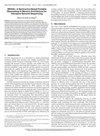紫晶:通过动态自动调优和虚拟机管理减少数据中心排放
IF 1.4
3区 计算机科学
Q4 COMPUTER SCIENCE, HARDWARE & ARCHITECTURE
引用次数: 0
摘要
为了减少云计算中出现的碳排放,我们提出了紫晶,一种新的虚拟机放置和迁移策略,能够适应当前可用的绿色能源的消耗。Amethyst从三个方面解决了这个问题:它调整了能耗,优化了FPGA加速器上的执行,平衡了服务器之间的执行。我们用实际工作负载来评估该策略。我们在CloudSim Plus上的模拟表明,紫水晶有效地减少了云计算的碳排放,与最先进的相比,它提高了能源效率。本文章由计算机程序翻译,如有差异,请以英文原文为准。
Amethyst: Reducing Data Center Emissions With Dynamic Autotuning and VM Management
To reduce emerging carbon emissions in cloud computing, we proposed Amethyst, a new VM placement and migration strategy capable of adapting consumption to the currently available green energy. Amethyst tackles the problem on three fronts: it adjusts the consumption to energy production, optimizes execution on FPGA accelerators, and balances execution among servers. We evaluate the strategy with real workloads. Our simulations on CloudSim Plus show that Amethyst effectively reduces the carbon emissions of cloud computing and, compared to the state-of-the-art, it increases the energy efficiency.
求助全文
通过发布文献求助,成功后即可免费获取论文全文。
去求助
来源期刊

IEEE Computer Architecture Letters
COMPUTER SCIENCE, HARDWARE & ARCHITECTURE-
CiteScore
4.60
自引率
4.30%
发文量
29
期刊介绍:
IEEE Computer Architecture Letters is a rigorously peer-reviewed forum for publishing early, high-impact results in the areas of uni- and multiprocessor computer systems, computer architecture, microarchitecture, workload characterization, performance evaluation and simulation techniques, and power-aware computing. Submissions are welcomed on any topic in computer architecture, especially but not limited to: microprocessor and multiprocessor systems, microarchitecture and ILP processors, workload characterization, performance evaluation and simulation techniques, compiler-hardware and operating system-hardware interactions, interconnect architectures, memory and cache systems, power and thermal issues at the architecture level, I/O architectures and techniques, independent validation of previously published results, analysis of unsuccessful techniques, domain-specific processor architectures (e.g., embedded, graphics, network, etc.), real-time and high-availability architectures, reconfigurable systems.
 求助内容:
求助内容: 应助结果提醒方式:
应助结果提醒方式:


